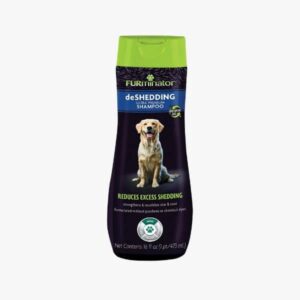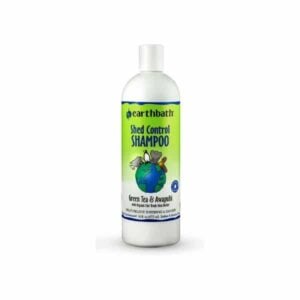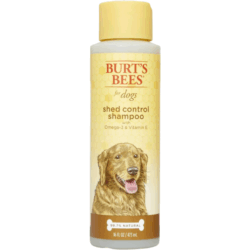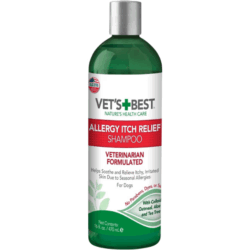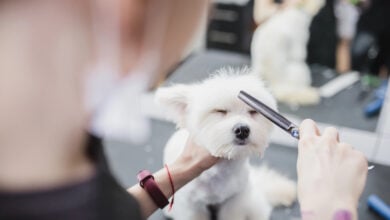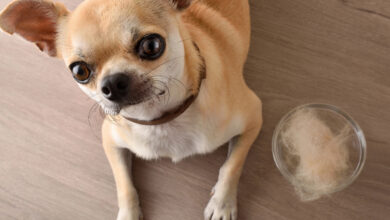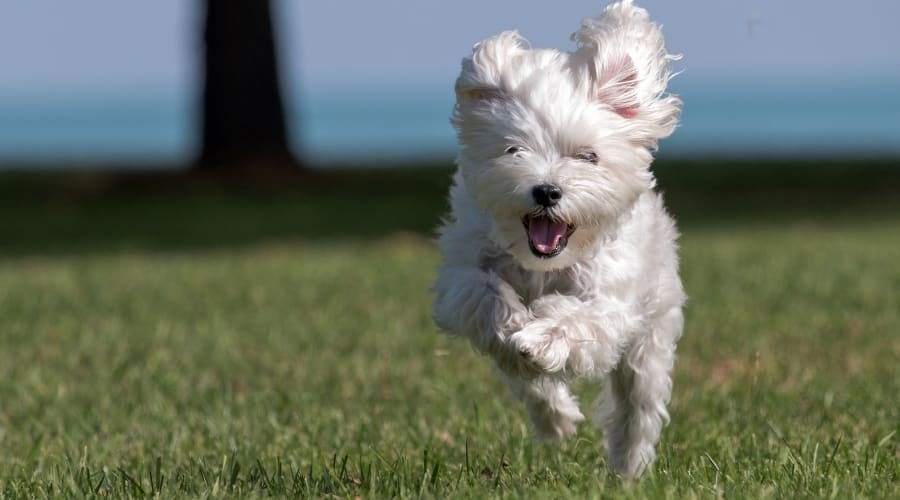How To Reduce Dog Shedding Without Going Fur-Crazy
When you purchase through links on our site, we may earn a commission. Here’s how it works.
You love your dog. But the tumbleweeds of fur under your couch? Not so much.
Table of Contents
If you’re finding hair on your pillow, your food, and maybe even inside your coffee mug, you’re not alone. The good news is that shedding can be managed—and sometimes dramatically reduced—with the right strategy.
Why Your Dog Is Molting Like a Woolly Mammoth
Some dogs are just built for shedding. Breeds like Huskies, German Shepherds, and Golden Retrievers come with double coats designed to shed with the seasons.
But when it goes from expected to excessive, something else might be going on. Skin irritation, allergies, stress, or even parasites can all crank up the fur fallout.
Pay attention to sudden changes. If your short-haired dog is leaving behind enough fluff to knit a sweater, it’s worth checking with your vet.
Factors That Affect Shedding
Your dog’s breed and coat type set the baseline, but other things can send shedding into overdrive.
- Allergies: Dogs can react to pollen, food, dust mites, or even the detergent in their bedding. Allergic reactions often show up as itching, licking, and fur loss.
- Fleas & Ticks: These tiny pests can wreak havoc on your dog’s skin. Constant scratching leads to irritated skin and patchy hair loss.
- Poor Nutrition: Dogs need specific nutrients like omega-3s, biotin, and zinc for healthy fur. A low-quality or unbalanced diet often shows up first in their coat.
- Pregnancy or Hormonal Changes: Pregnant and nursing dogs often shed more due to hormonal fluctuations. Spaying or neutering can also cause a temporary shift in coat quality.
- Skin Conditions: Issues like mange, fungal infections, or dermatitis can result in severe shedding. Get your vet involved if you notice redness, flaking, or an odor.
- Stress: Big life changes, new pets, or even a change in routine can trigger shedding. Dogs under stress might lick or bite themselves, leading to bald patches.
A vet check is the smartest move if your dog’s shedding seems unusual or is paired with skin issues. Sometimes, the fix is simple. Other times, it’s a sign of something deeper.
How To Build A Shedding-Resistant Routine
If you want to reduce dog hair on your floors, clothes, and furniture, it takes more than a single miracle product. Effective shed control is all about combining small habits that support your dog’s skin and coat health from the inside out.
These simple changes can make a big difference, especially during peak shedding seasons. Let’s walk through the most impactful steps.
Brush Your Dog Daily
Brushing is your first line of defense against excessive shedding. It helps remove loose fur before it can fall off naturally—and collect on your couch.
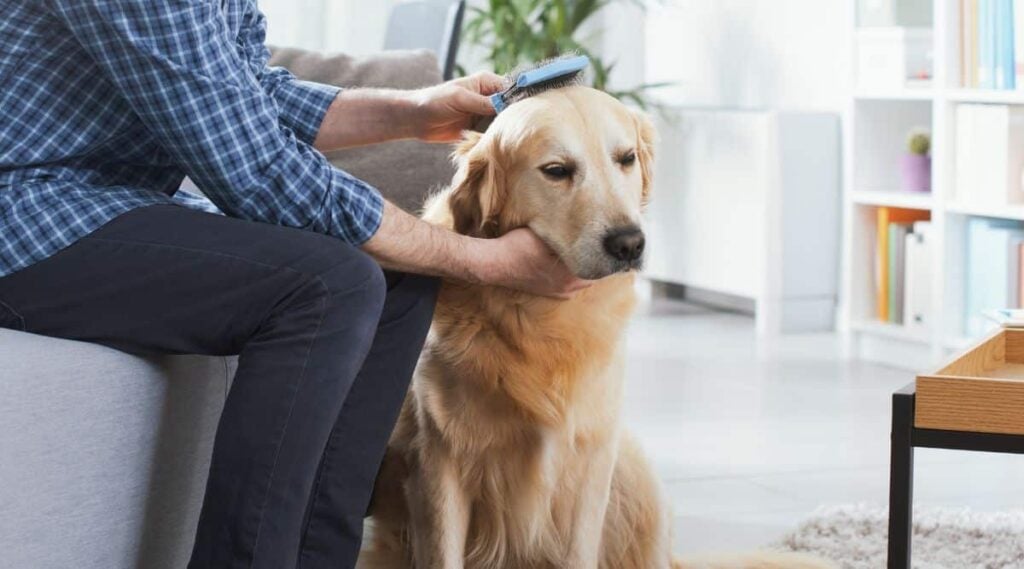
Regular brushing also stimulates circulation and helps distribute your dog’s natural oils, keeping their coat shiny and healthy. It’s especially important for dogs with double coats or thick undercoats.
Choose the right tool for your dog’s coat type. De-shedding brushes, undercoat rakes, and grooming gloves can all help—just make sure it reaches the undercoat if your dog has one.
Don’t rush the process. Take your time, and try to make it a calming part of your dog’s daily routine. Most dogs learn to enjoy brushing with enough patience and positive reinforcement.
If daily brushing isn’t realistic for you, aim for at least every other day. It makes a noticeable difference, and your vacuum will thank you.
Use A De-Shedding Shampoo Once a Month
The right shampoo won’t stop shedding entirely, but it can reduce the amount of loose hair your dog sheds between grooming sessions.
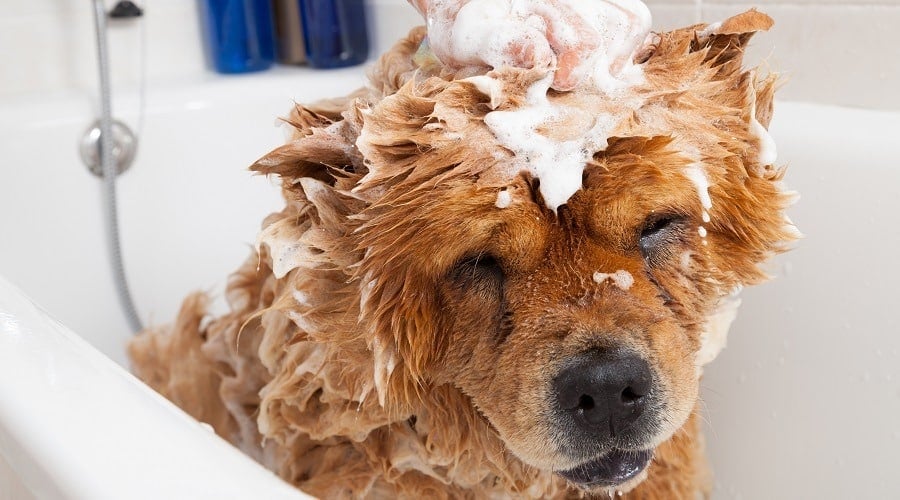
De-shedding shampoos are formulated to support skin health, soothe irritation, and hydrate the coat. Many include ingredients like omega fatty acids, aloe vera, or oatmeal.
Use these shampoos once a month to avoid over-drying your dog’s skin. Too many baths can strip away natural oils and make shedding worse.
Make sure to lather thoroughly and let the shampoo sit for a few minutes before rinsing. This gives active ingredients time to do their job.
After the bath, towel dry and brush your dog to remove any loosened fur. You’ll be amazed how much comes out post-shampoo.
Consider using a detangling spray for long-haired breeds to reduce pulling and make brushing more comfortable.
Feed A Balanced Diet Rich in Skin-Supporting Nutrients
Nutrition plays a bigger role in shedding than many dog owners realize. A poor diet can lead to brittle fur, dry skin, and excessive shedding.
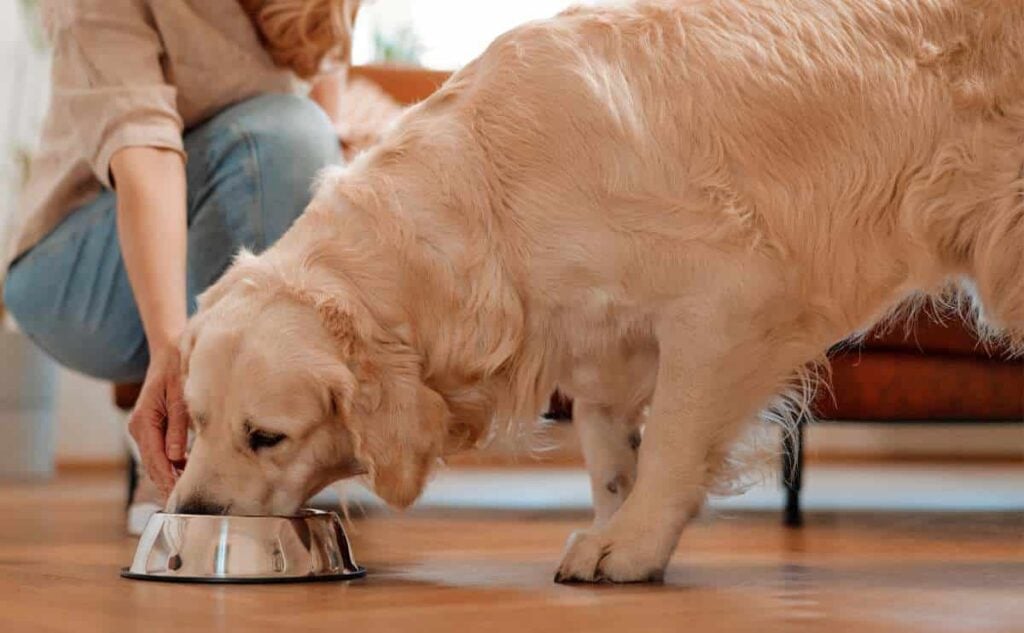
Look for dog foods with high-quality protein sources and omega-3 and omega-6 fatty acids. These nutrients are essential for healthy skin and a glossy coat.
Biotin, zinc, and vitamin E also help strengthen hair follicles and reduce breakage. Some dogs benefit from supplements, but many quality foods already meet their needs.
Talk to your vet about adjusting their diet if your dog’s coat is dull or shedding heavily despite grooming. Sometimes, a simple switch in food makes all the difference.
Don’t forget treats count, too. Choose nutrient-rich options that support skin and coat health instead of empty-calorie snacks.
Keep Their Water Bowl Full—Hydrated Skin Sheds Less
Hydration affects every part of your dog’s body—including their skin. When dogs don’t get enough water, their skin can become dry and flaky, which leads to more fur falling out.
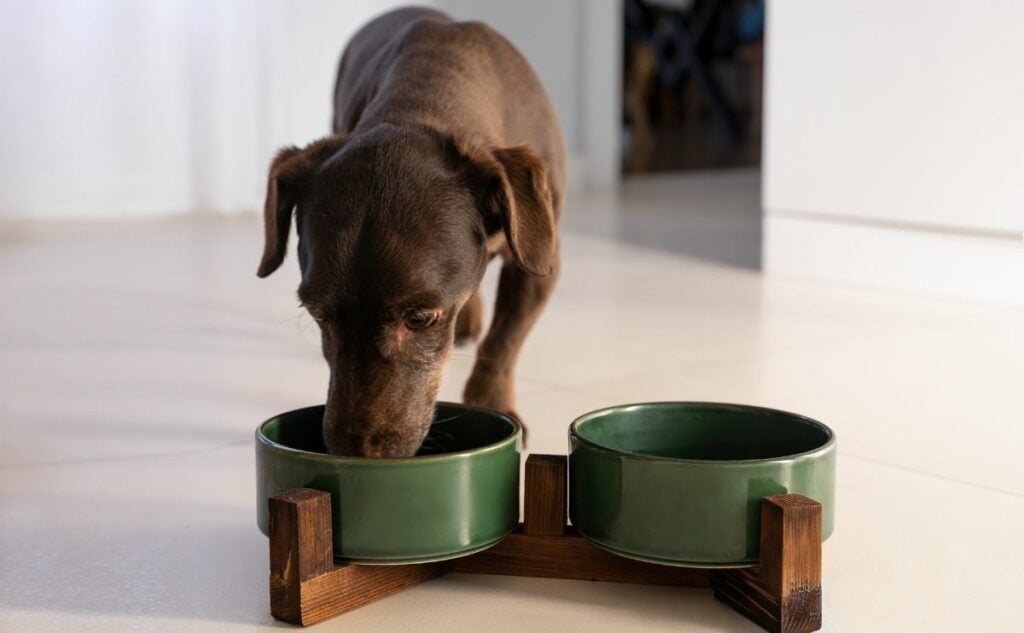
Make sure your dog has access to fresh, clean water at all times. Refill the bowl regularly and wash it out daily to keep bacteria and slime at bay.
In hot weather or after exercise, encourage your dog to drink more by adding ice cubes or a splash of low-sodium broth to their water.
Some dogs are picky drinkers. Try using a pet fountain or elevated bowl to entice them.
Hydrated skin is healthy skin, and healthy skin sheds a whole lot less.
Vacuum Regularly With a Pet-Hair-Specific Attachment
Even the best shedding routine won’t catch everything. That’s where your vacuum comes in.
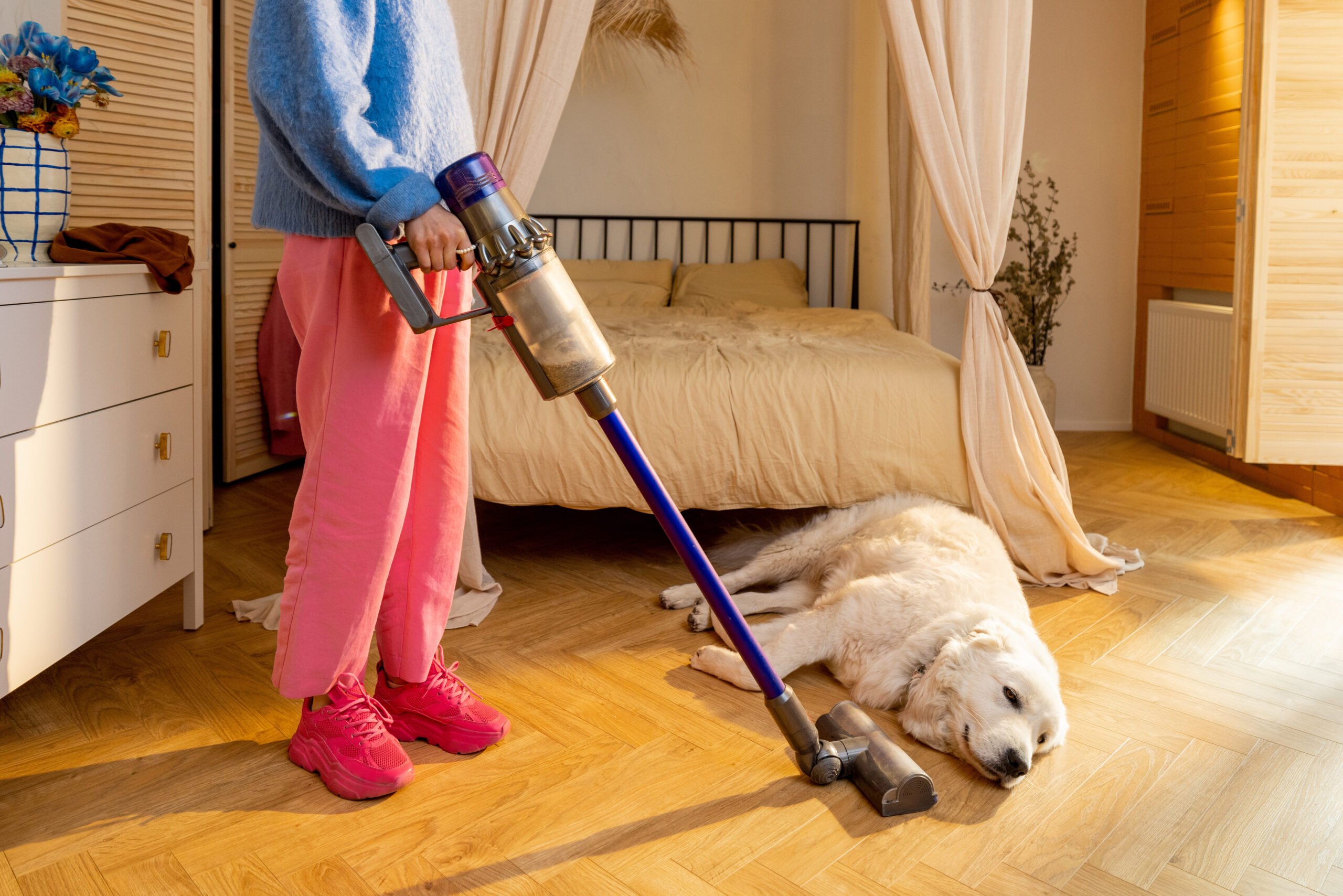
Invest in a vacuum designed for pet hair, ideally with a motorized brush roll and HEPA filter. These models are built to grab stubborn fur from carpets, rugs, and upholstery.
Use attachments to reach under furniture and along baseboards where hair tends to collect. A handheld vacuum is handy for spot-cleaning dog beds and stairs.
Vacuum frequently during peak shedding season—daily if needed. It keeps your home more comfortable and cuts down on allergens.
Bonus tip: keep a lint roller near entryways and furniture. It’s your best friend in between vacuuming sessions. The ChomChom roller is also shockingly effective at removing hair from soft surfaces.
When It’s Not Just Shedding: Red Flags to Watch For
Shedding is normal—but some signs mean it’s time to talk to your vet.

Keep an eye out for:
- Bald spots or thinning patches
- Persistent itching or licking
- Red, irritated, or flaky skin
- A sudden spike in shedding with no seasonal change
These symptoms could point to underlying problems like skin infections, parasites, or hormonal issues. The earlier they’re treated, the easier they are to manage.
The Secret Weapon In Your Shower: Dog Shampoos That Reduce Shedding
Here’s the thing: no shampoo can defy biology. But the right formula can improve skin health, reduce irritation, and make fur fall out less often.
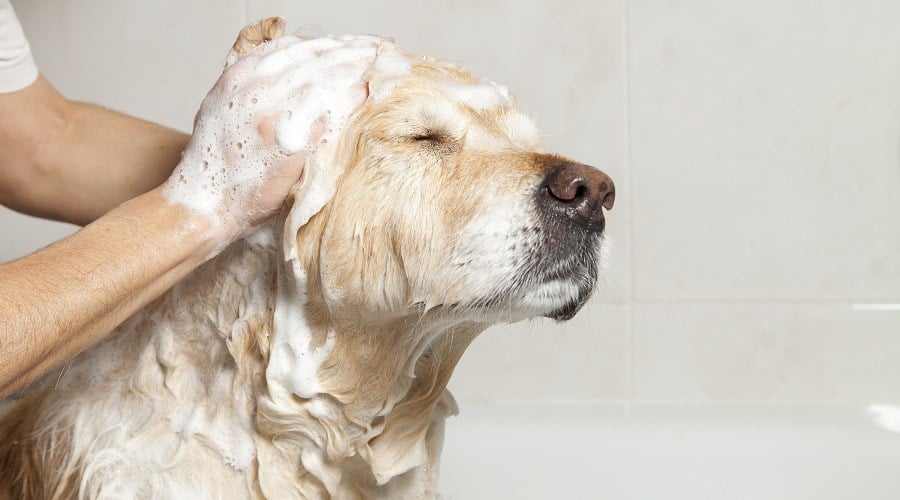
Furminator Deshedding Ultra Premium Review
View on Amazon | View On Chewy
Furminator has made itself a renowned name in the world of dog shedding thanks to its high-performance de-shedding tool, but the brand also makes a fantastic shampoo for excessive shedding. This formula focuses on the root of the problem—your dog’s skin.
Loaded with omega-3 and -6 fatty acids, calendula extract, collagen, and keratin, this shampoo nourishes your pup’s skin while strengthening their coat. Healthy skin means fewer loose hairs.
It’s free of parabens, artificial dyes, and chemical irritants, which makes it safe for regular use—even for dogs with sensitive skin. When paired with a good brushing routine, Furminator helps reduce the constant need to vacuum.
This is a standout choice for breeds with thick undercoats.
Earthbath Shed Control Review
View on Amazon | View On Chewy
Earthbath is a favorite among natural pet care enthusiasts, and for good reason. Their shed control formula is powered by green tea extract, aloe vera, and shea butter—all ingredients that calm inflammation and hydrate dry skin.
This shampoo is also pH-balanced for dogs, which helps maintain the protective barrier of your pup’s skin. It contains no parabens, sulfates, synthetic dyes, or artificial fragrances.
Dogs with sensitive skin tend to respond well to Earthbath, and many owners report noticeable improvements in shedding within a few weeks of use.
If you want an eco-friendly, dog-safe option that gets real results, Earthbath is a great place to start.
Burt’s Bees For Dogs Shed Control Review
View on Amazon | View On Chewy
Burt’s Bees offers a gentle, natural solution for shedding with its shed control shampoo made with omega-3 and -6 fatty acids from flaxseeds, vitamin E, and honey. These ingredients help strengthen hair follicles and reduce breakage while keeping your dog’s coat soft and shiny.
This shampoo is pH-balanced for dogs and free from sulfates, colorants, and harsh chemicals. It’s ideal for pet parents who want a mild, eco-conscious option that’s easy on sensitive skin.
Because of its light lather and minimal scent, it’s a good choice for frequent use—especially for dogs who need regular baths during heavy shedding seasons.
Douxo Skin & Coat SPA Ultra-Safe Shed Control Review
View on Amazon | View On Chewy
Douxo’s ultra-safe SPA formula is crafted with 97% natural-origin ingredients and designed to support both skin health and coat strength. Its key ingredients include omega-3 from Inca peanut seed oil, provitamin B5, vitamin E, and Ophiopogon root extract—a traditional Chinese medicinal herb known for its hydrating and anti-inflammatory properties.
This shampoo is soap-free, pH-balanced, and ideal for dogs with sensitive skin or those prone to excessive shedding. It gently cleanses while moisturizing the skin and supporting the natural barrier function to reduce flakes and breakage.
Though not a budget product, Douxo’s formula is backed by veterinarians and offers excellent results for dogs with chronic or seasonal shedding concerns.
Vet’s Best Allergy Itch Relief Review
View on Amazon | View On Chewy
Vet’s Best offers a shed-friendly shampoo that also targets one of the root causes of excessive fur loss: allergies. Formulated with oatmeal, neem oil, and aloe vera, it soothes itchy, irritated skin and provides relief from seasonal or environmental allergens.
This shampoo is ideal for dogs that suffer from itch-induced shedding. If your dog licks, chews, or scratches themselves constantly, reducing that irritation can mean less fur around your home.
It’s free of harsh soaps and is safe to use with topical flea treatments, making it a convenient option for dogs with sensitive skin or active skin conditions.
We recommend this one for allergy-prone pups, especially if you notice red or inflamed skin during heavy shedding months.
Pet Honesty Chlorhexidine Shampoo Review
View on Amazon | View On Chewy
Pet Honesty’s medicated chlorhexidine shampoo tackles another hidden cause of excess shedding: bacterial and fungal skin issues. It’s recommended for treating hot spots, dandruff, and yeast infections—all of which can cause fur loss.
This formula includes aloe to counteract dryness and soothe the skin while the active ingredients do their job. It’s great for dogs with smelly coats, red patches, or persistent itchiness that’s resisting standard shampoos.
Use this one only as directed and avoid overuse—it’s a powerful product designed for specific cases.
Comparison Table: Anti-Shed Shampoos
Here’s a quick comparison of the top shampoos reviewed in this article to help you choose the one that best fits your pup’s needs.
| Shampoo | Key Ingredients | Best For |
|---|---|---|
| Furminator | Omega-3 and 6, calendula, collagen, keratin | Heavy shedders with thick undercoats |
| Earthbath | Green tea, aloe, shea butter | Sensitive skin & eco-conscious owners |
| Burt’s Bees | Omega-3 and 6, vitamin E, honey | Frequent use & gentle formulas |
| Douxo SPA | Omega-3, vitamin E, ophiopogon | Chronic shedders with sensitive skin |
| Vet’s Best | Oatmeal, aloe, neem oil | Allergy-prone dogs |
| Pet Honesty | Chlorhexidine, aloe | Dogs with skin infections or hot spots |
Use this guide as a quick reference if you’re trying to narrow down the right shampoo for your dog’s shedding situation.
Heavy Shedding Breeds
Some dogs just shed a lot.
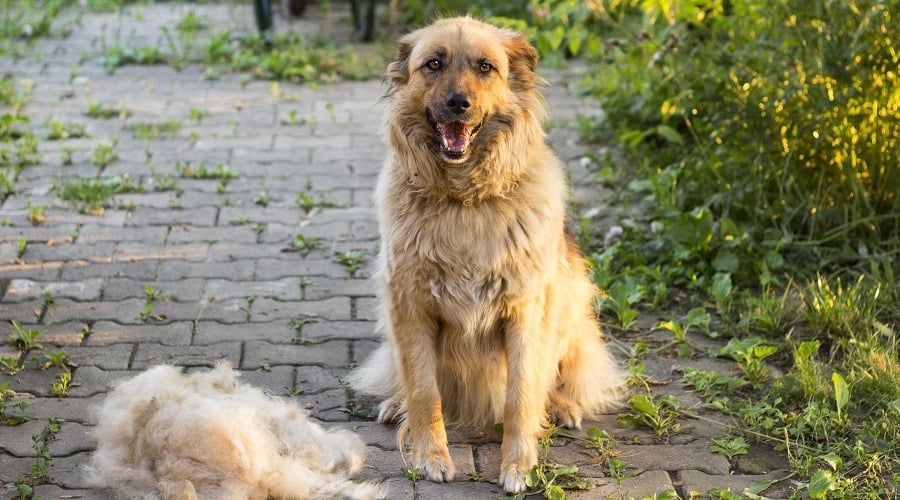
Here are the usual suspects:
- Akitas
- Akita Mixes
- Saint Bernard
- Golden Retriever
- Golden Retriever Mixes
- Great Pyrenees
- Siberian Husky
- Long-Haired German Shepherd
- Shiloh Shepherd
- King Shepherd
- Alaskan Malamute
- Australian Shepherd
- Aussie Mixes
If your dog is on this list, you’re not doing anything wrong. They’re just designed for fluff. Add a brush and a lint roller to your survival kit.
Frequently Asked Questions
The topic of shedding can bring with it many questions, as shedding can be quite a nuisance in our home.
Below are some of the most common questions about shedding and shedding shampoos. Don’t see yours? Ask us in the comments!
Do Dogs Shed More During Certain Times Of The Year?
Yes, dogs do shed more during certain seasons. Since the main purpose of a dog’s coat is for survival, their coat thickness will vary depending on the environment in which they live.
During colder seasons, their coat will be plush enough to assist in keeping them warm. During warmer seasons, their coat will shed more in an effort to help them regulate them cool off.
Can Shedding Be An Indicator Of Health Problems?
While shedding is normal, excessive shedding can be of concern.
Some reasons behind sudden and excessive shedding in dogs includes fleas, allergies, skin irritation, stress, hormonal changes, skin conditions, and any other condition that can result in poor skin and coat health.
When Is It Time To See The Vet When Your Dog Is Shedding?
Some signs that would warrant a visit to the vet include: skin irritation, excessive itching, sores on the skin, bald spots, licking and chewing area on their body.
Are There Dogs That Shed Less Than Others?
Though shedding is normal, there are some dogs that are known to shed less. Some breeds that shed less include poodles, maltese, yorkies, shih tzus, schnauzers, labradoodles, westies, cairn terriers, and bichons.
How Often Should You Brush A Dog To Help Reduce Shedding?
Hairy dogs with thick fur should be brushed daily in an effort to decrease the fur around your home. Other dogs can get away with brushing 3-4 times a week.
Want More Hair-Saving Tips?
If you’re ready to take your dog’s grooming game to the next level, we’ve got you covered. Check out these helpful guides:
Reducing shedding takes a whole toolkit—not just a shampoo. Keep learning, keep brushing, and your vacuum will thank you.
